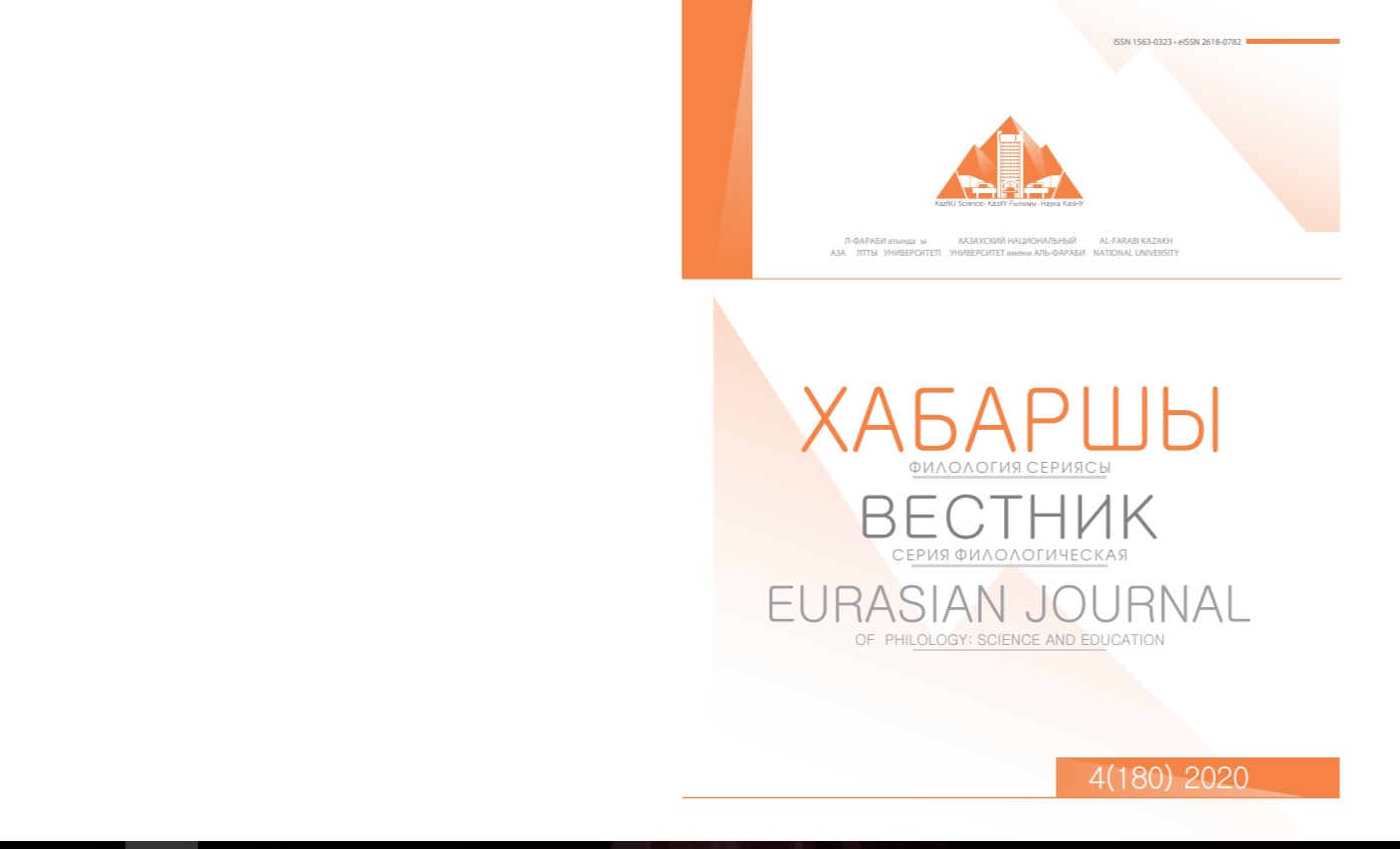Дифференциальные семы в общих лексических единицах современного турецкого языка и диалектов азербайджанского языка
DOI:
https://doi.org/10.26577/EJPh.2020.v180.i4.ph11Аннотация
Диалекты азербайджанского языка богаты грамматическими и лексическими материалами, которые являются общими для лексической, грамматической структуры современных тюркских языков. Некоторые лексико-семантические особенности азербайджанских диалектов, используемых в современном турецком литературном языке, важны с точки зрения изучения структурных особенностей современного языка в диалектах, отслеживания исторического развития лингвистических единиц. Хотя некоторые особенности азербайджанских диалектов отсутствуют в современном азербайджанском языке, они широко используются как факт литературного языка в современном турецком языке. Общие с современным турецким языком диалектные факты охватывают на грамматическом уровне языка части речи, общие и специальные грамматические категории, а также грамматическую функциональность словообразующих и словоменяющих аффиксов, словообразование и другие области. И вследствие семантической функциональности слов, между диалектами азербайджанского языка и современным турецким литературным языком наблюдаются общие черты, некоторые диалектные слова остаются такими же, как в современном турецком литературном языке, или подвергаются смысловому изменению. Дифференциация завершается формированием семов внутри значения. Семы, относящиеся к семантической структуре общего слова, представлены в лингвистических формах (диалектах и литературном турецком языке) в разных количествах. Общность азербайджанских диалектов и лексика современного турецкого литературного языка обусловлена рядом причин. Первая причина – общее происхождение обоих языковых вариантов. Общность происхождения проявляется также и между диалектами азербайджанского языка и другими тюркскими языками. Однако на фоне географической близости и культурноисторических отношений изогласы, присущие сравниваемым языковым формам, видны более наглядно. Общие слова, наряду с одинаковым значением, объединяют также мотивационные сходства. Схожая мотивация иногда бывает связана с широтой смыслового содержания слова. То есть в смысловом содержании слова в диалектной лексике, наряду со сравниваемым в турецком языке значением, проявляется еще несколько значений. В обоих языковых формах слово «зындык»//«zındık» характеризуется отрицательным концептом. В то время, как в современном турецком языке «зындык»//«zındık» означает «гяур, неверующий», в диалектах азербайджанских оно выражает разные значения («сварливый», «невысокий человек», «наглец», «бесстыдник»).






